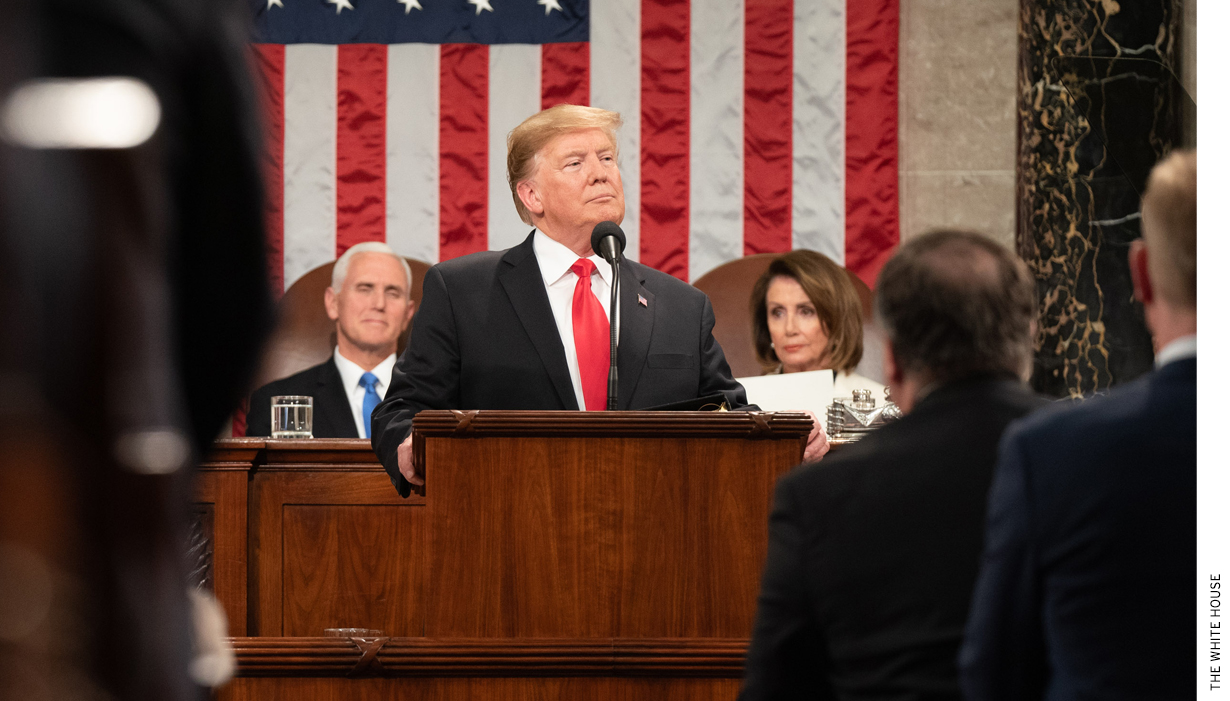
The transcript of President Trump’s State of the Union speech that was released by the White House mysteriously capitalized the phrase “School Choice,” as if it were the title of a law: “To help support working parents, the time has come to pass School Choice for Americans’ children.”
Unlike some of the president’s other domestic policy proposals, though, the language about school choice was accompanied by no details about a budget or forthcoming legislative action.
So what was with the capital letters?
One wouldn’t want to make too much of them. But one wouldn’t want to make too little of them, either. Some legislation does appear to be moving forward, at least in the Senate. On January 23, Senator Ted Cruz, calling school choice “the civil rights issue of the 21st century,” said he planned “next week” to introduce “federal school choice legislation that would create a federal tax credit, a dollar for dollar credit, of every dollar contributed to a scholarship granting organization, is a credit on your federal taxes.”
Said Cruz: “Justice is on our side. You know, the rich and middle class have had school choice from the dawn of time. Those with lots of money have the ability to choose the educational options for their kids. School choice is about ensuring every child has that option, regardless of if mom and dad have a bunch of money in the bank or not.”
That sort of framing — “support working parents,” in Trump’s wording, or Cruz’s “justice… regardless of if mom and dad have a bunch of money in the bank or not” — has been successful at the state level in winning the enactment of state tax credits for donations to organizations that support scholarships to private and parochial schools. Such programs began in Arizona in 1998 and now exist in 18 states, including Florida, Pennsylvania, Minnesota, Iowa, and Illinois. Polling, including the 2018 Education Next Poll, indicates that tax credits for “scholarships to help low-income parents” generates stronger support and less opposition than does government funding for “vouchers” that have a similar effect. Such state scholarships also avoid legal problems with state Blaine amendments that some courts have interpreted as preventing government funding for religious schools.
This state-level progress is one significant and underappreciated way that the school choice debate has progressed since 1996, when Robert Dole ran for president advocating a federal school voucher program and lost, and also since the 1970s and 1980s, when Senator Daniel Patrick Moynihan of New York and President Reagan proposed federal tuition tax credits.
Reagan included language about the issue in his 1984 State of the Union — going into his presidential re-election year: “I will continue to press for tuition tax credits to expand opportunities for families and to soften the double payment for those paying public school taxes and private school tuition. Our proposal would target assistance to low- and middle-income families. Just as more incentives are needed within our schools, greater competition is needed among our schools.”
A federal law could provide financial incentives to more states to enact state scholarship programs of their own. The structure of such incentives, and whether any strings should be attached, is proving to be a bit of a challenge. The Trump education department, led by longtime choice proponent Betsy DeVos, wants to give states wide latitude and authority to design and implement the programs. Senator Cruz is said to want to impose strings requiring that the scholarships be usable in traditional private and parochial schools rather than merely in, say, Sylvan or Kumon learning centers that supplement public schools rather than substitute for them.
Federal lawmakers face the additional challenge of how to “pay for” the foregone revenue from the tax credits. That task has been easier at the state level because at the state level, the programs save money; each student enrolled in a private school is one less student that a state must pay to educate in a public school.
Even if such issues are resolved, any legislation faces a tough road in a House of Representatives controlled by Democrats. Speaker Nancy Pelosi would not be keen to grant Trump an election-year victory, and teachers unions, an important force in Democratic politics, reliably oppose measures that would drain students from unionized public schools to less unionized private schools.
So if Trump’s sentence doesn’t signal a law headed rapidly for passage, what it could signal is a presidential campaign issue, or, possibly, a second-term agenda. If Trump faces a Democrat with a stronger-than-usual education track record, such as Michael Bloomberg or Cory Booker, he’ll have something to talk about, or to challenge them on. If Trump faces a more “progressive” Democrat or a socialist such as Bernie Sanders or Elizabeth Warren, the school choice proposal gives him a way to answer when they ask what he’s doing to address inequality.
Trump and Cruz will be worth watching closely on this issue all the way through November 2020. By then, Trump may well have occasion, and reason, to expand on the topic for more than a single sentence.
Ira Stoll is the managing editor of Education Next.


